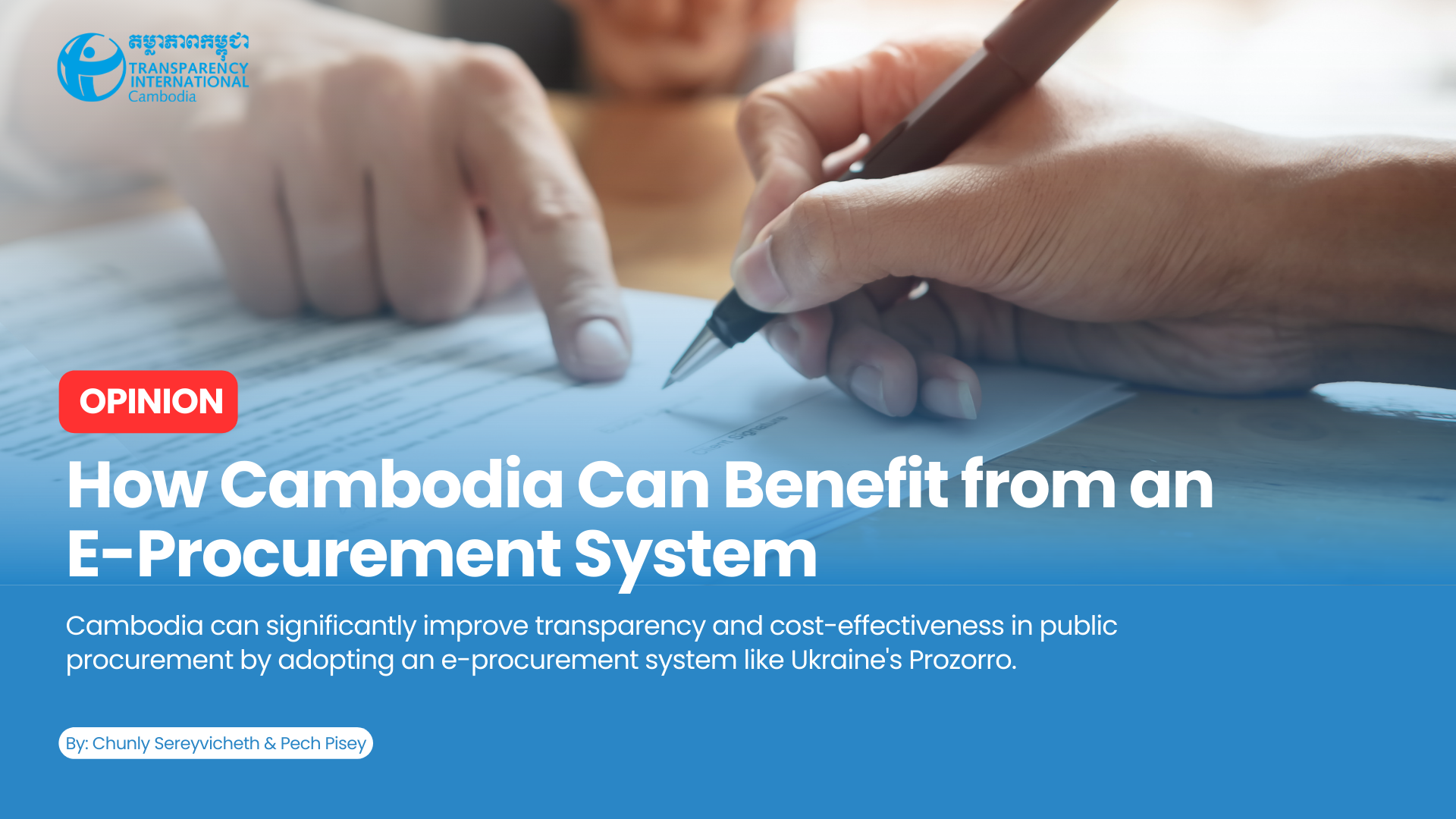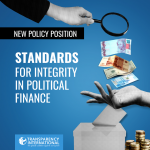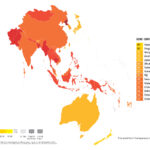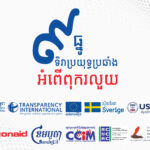How Cambodia Can Benefit from an E-Procurement System
Cambodia can significantly improve transparency and cost-effectiveness in public procurement by adopting an e-procurement system like Ukraine’s Prozorro.
By Chunly Sereyvicheth and Pech Pisey
July 23, 2024
In a recent communication to sub-national officials, Sar Sokha, Cambodia’s Minister of Interior, noted a rise in complaints about alleged fraud and corruption in the bidding processes for commune fund projects. He urged these local authorities to address the ongoing issues. Sokha’s concerns are consistent with existing research, which shows that public procurement in Cambodia faces significant corruption risks at all levels. While any reforms must consider local context, Cambodia could draw valuable insights from the success of Prozorro, an electronic public procurement program implemented in Ukraine.
Launched in 2016, Prozorro is an online public procurement system where all government entities in Ukraine post tenders for the acquisition of goods, services, and works, allowing businesses to compete for contracts to become state suppliers. One of the key features of Prozorro is its commitment to openness. All details of tenders, bids submitted by competing businesses, and ultimately awarded contracts are readily available online for public scrutiny. For example, when the Ukrainian government puts a road construction project out to tender, the public can see which companies submitted bids, the details of their offers, and the tender commission’s rationale for selecting the winning bid. To take part in procurements, businesses simply need to register on any of the authorized online marketplaces. Once registered, they can browse and participate in any procurement opportunity listed throughout the entire Prozorro system. The participation requirements are the same for both Ukrainian and foreign companies.
Through Prozorro, Ukraine now conducts over 320 thousand competitive procurements totaling $14 billion annually. This has resulted in significant cost savings. Since its launch, Prozorro has helped Ukraine save nearly $6 billion in public funds. In 2023 alone, the system’s competitive procurement process saved $1.6 billion, amounting to over 10% of the total procurement value. This marks a dramatic turnaround from the pre-Prozorro era, where estimates suggest Ukraine lost a staggering $2.2 billion annually – a full 20% of its procurement budget – to corruption and limited competition..
Prozorro has gained global recognition as one of the most innovative systems for public procurement. It was included in the U.S. Strategy on Countering Corruption in 2021, highlighting its role in fighting corruption. The European Bank for Reconstruction and Development (EBRD) even endorsed it as a model for procurement reform). Prozorro’s transparency has also been widely acknowledged, earning it the title of most transparent public procurement system in 2020 and a total of eight international awards.
Why does Prozorro work? First, it is cost-effective, with low initial and maintenance expenses. The system doesn’t require significant investment in equipment or inventory. Second, Prozorro increases competition among bidders by utilizing the existing pools of suppliers already registered on commercial platforms. Third, the system strengthens anti-corruption measures by distributing risk across various participants. When all procurement information is accessible to the public, everyone involved is aware that their actions are being monitored and can be scrutinized by others. Different stakeholders, such as suppliers, auditors, and the public, can spot irregularities and raise concerns. This reduces the risk of any one party manipulating the process without detection, and, in short, discourages corrupt behavior. Finally, Prozorro’s compliance with international standards enhances trust and credibility in the procurement process.
Indeed, each country is different and implementing a Prozorro-like system in Cambodia may encounter several challenges. Some public officials and businesses might not have the technical skills required to navigate an electronic procurement system effectively. In addition, some regions may lack the technological infrastructure to support such a system, including reliable internet access and adequate hardware. Nevertheless, a phased implementation strategy could be adopted before expanding nationwide. For example, similar to Ukraine, the government could pilot this project on a small scale, focusing on a limited number of procurements within specific sectors, ministries, or levels of government. Furthermore, it could start with below-the-threshold purchases to test and refine the system.
Overall, Prozorro’s transparency, fostered by online access to tender details and competition, has demonstrably reduced corruption and saved billions. While Cambodia has its unique context, exploring the adaptation of this model might prove beneficial. An e-procurement system, implemented strategically and considering potential challenges, can significantly enhance transparency, competition, and cost-effectiveness in Cambodian public procurement.
Dr. Chunly Sereyvicheth is Head of Center for Governance Research and Education, Transparency International Cambodia. Pech Pisey is Executive Director of Transparency International Cambodia.
 English
English





